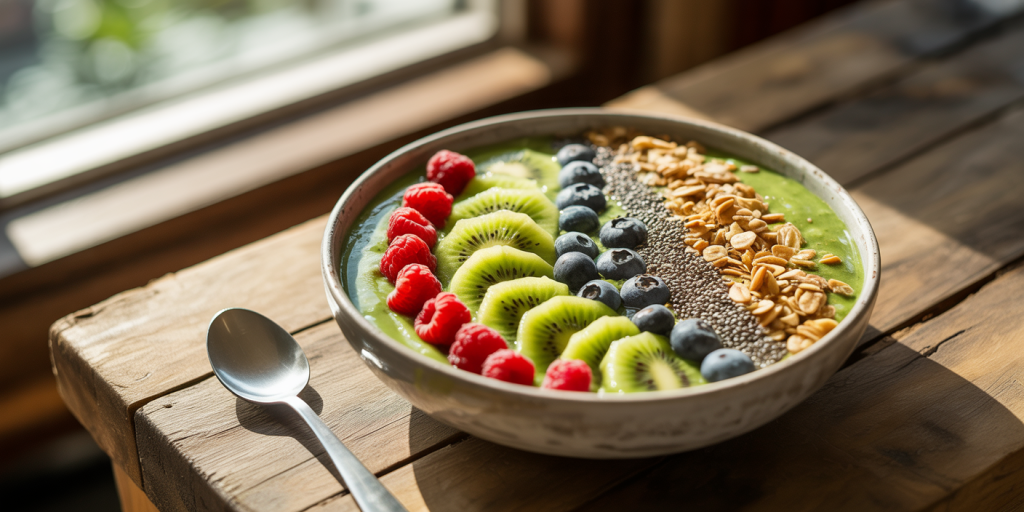Breakfast plays a crucial role in a child’s daily routine, influencing their energy levels, cognitive function, and overall health. According to the American Academy of Pediatrics, a nutritious morning meal improves attention span, memory, and academic performance in children. Yet, many parents struggle to find breakfasts that their kids enjoy while also meeting nutritional standards. Balancing taste appeal with health benefits can be challenging but achieving this is essential to support children’s growth and development. This article explores popular breakfast choices favored by kids, reimagined healthy recipes, and practical ways to make mornings fun and nutritious.
The Importance of a Balanced Breakfast for Children
Breakfast is often touted as the most important meal of the day, especially for growing children. Studies have demonstrated that skipping breakfast can lead to reduced concentration, poor mood, and lower academic outcomes. The Centers for Disease Control and Prevention (CDC) report that children who eat breakfast tend to maintain better weight control and are less likely to have elevated cholesterol and blood sugar levels.
A well-balanced breakfast typically includes complex carbohydrates, lean proteins, healthy fats, and essential vitamins and minerals. For example, whole grains can provide sustained energy release, while protein promotes satiety and muscle development. Including colorful fruits and vegetables ensures an ample intake of fiber and antioxidants. Finding creative ways to combine these elements helps make breakfasts not only appealing but also nourishing.
Creative and Nutritious Breakfast Ideas Kids Love
Many children prefer familiar flavors and fun presentations, so parents can enhance traditional breakfasts with healthier ingredients. For instance, replacing sugary cereals with homemade granola that contains rolled oats, nuts, and dried fruit provides a crunchy texture packed with fiber and omega-3 fatty acids. Pairing granola with plain yogurt and fresh berries adds probiotics and antioxidants to the meal.
Smoothie bowls have surged in popularity as another excellent choice. Blending spinach, frozen bananas, and Greek yogurt creates a creamy base dense with vitamins A and C, potassium, and protein. Toppings can include granola, chia seeds, and colorful fruits arranged in cheerful patterns. This not only introduces veggies in a non-intimidating way but also appeals to children’s visual preferences, increasing their willingness to try new foods.

Real-life case studies from parents reveal the success of dinner-to-breakfast swaps. One mother in Seattle reported that preparing mini frittatas the night before—made with eggs, cheese, and finely chopped vegetables—led to her picky eater enthusiastically requesting breakfast on their own before school. This method also saves precious morning time while ensuring a protein-rich meal.

Comparing Popular Breakfast Foods: Nutritional Value and Kid Appeal
To better understand why some breakfasts become favorites, it’s helpful to look at common options side by side. The table below examines the nutritional profiles and appeal factors of four popular breakfasts: pancakes with syrup, scrambled eggs, cereal with milk, and oatmeal with fruit.
| Breakfast Item | Calories (per serving) | Protein (g) | Sugar (g) | Fiber (g) | Kid Appeal Factors | Health Considerations |
|---|---|---|---|---|---|---|
| Pancakes with syrup | 350 | 6 | 18 | 1.5 | Sweet taste, fluffy texture | High sugar, low fiber; choose whole wheat flour and natural sweeteners for healthier option |
| Scrambled eggs | 180 | 12 | 1 | 0 | Creamy, savory; easily customizable | High in protein and healthy fats; moderate cholesterol; add veggies for more nutrients |
| Cereal with milk | 220 | 7 | 15 | 3 | Crunchy, quick to prepare | Watch added sugar; opt for whole grain cereals with low sugar |
| Oatmeal with fruit | 250 | 8 | 7 | 5 | Warm, comforting; sweet or savory options | Rich in fiber and vitamins; versatile for flavor variations |
This comparison highlights the importance of choosing options low in added sugars and rich in nutrients. Parents can modify favorite dishes to improve their health profile—for example, adding nuts to oatmeal for extra protein and omega-3s or mixing berries into cereal instead of relying on sugary mascots.
Tips to Make Healthy Breakfasts More Engaging
Children are more likely to embrace meals that incorporate interactive and creative elements. A practical example is building a “breakfast charcuterie board” featuring small portions of cheese cubes, whole-grain crackers, fruit slices, and boiled eggs. This allows kids to personalize their meal, making eating a fun, hands-on activity.

Involving kids in the preparation process is another effective strategy. Research published in the Journal of Nutrition Education and Behavior shows that children who participate in cooking are more likely to try new foods and eat healthily overall. Simple tasks like stirring pancake batter, arranging fruit toppings, or assembling wraps foster interest and confidence in food choices.
Visual appeal also matters. Using colorful plates, fun-shaped cookie cutters, or arranging food into smiley faces or animals can entice children to eat more enthusiastically. Themed breakfast days—such as “Rainbow Fruit Salad” or “Superhero Smoothies”—can keep morning meals exciting and encourage dietary variety.
Addressing Common Challenges: Allergies, Time Constraints, and Picky Eaters
Parents often face multiple obstacles when preparing breakfast for their children, with allergies being one major concern. For instance, gluten intolerance or nut allergies require alternative recipes that do not compromise nutrition. Recipes using gluten-free oats, seed butter instead of peanuts, or dairy-free yogurts made from coconut or almond milk provide suitable substitutes without sacrificing flavor or health benefits.
Time is another common hurdle. Mornings can be rushed, and elaborate recipes may not be feasible. To tackle this, meal prepping over the weekend can be a game-changer. Preparing muffin tins filled with vegetable-egg cups or freezing smoothie packs (pre-measured portions of fruit, spinach, and yogurt) can save significant time while maintaining quality.
When facing picky eaters, persistence combined with variety is key. Offering new foods multiple times in different forms increases acceptance. For example, if a child refuses cooked carrots, offering raw carrot sticks alongside a fun dip might encourage tasting. Complementing new items with familiar favorites creates a balanced, gradual approach.
Future Perspectives in Children’s Breakfast Nutrition
As awareness of childhood nutrition evolves, innovative trends and technology are shaping how families approach breakfast choices. Personalized nutrition tailored to individual health profiles, allergies, and preferences is likely to become more accessible through AI-powered apps recommending recipes and grocery lists optimized for each child’s needs.
Sustainability concerns are also influencing breakfast options, encouraging more plant-based recipes that reduce environmental impact while promoting health. Products like oat milk and vegan protein powders are increasingly mainstream, enabling families to diversify meals without sacrificing nutrition.
Furthermore, educational programs in schools and communities are focusing on teaching children about nutrition early on, empowering them with knowledge for lifelong habits. Engaging children in agriculture through school gardens or farm visits fosters appreciation for fresh ingredients, further improving breakfast choices.
Technological advancements such as smart kitchen devices and meal planning apps can assist busy families in maintaining consistency. Automated grocery ordering based on customized breakfast menus ensures that nutritious ingredients are readily available, minimizing dependency on processed convenience foods.

Deixe um comentário